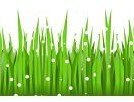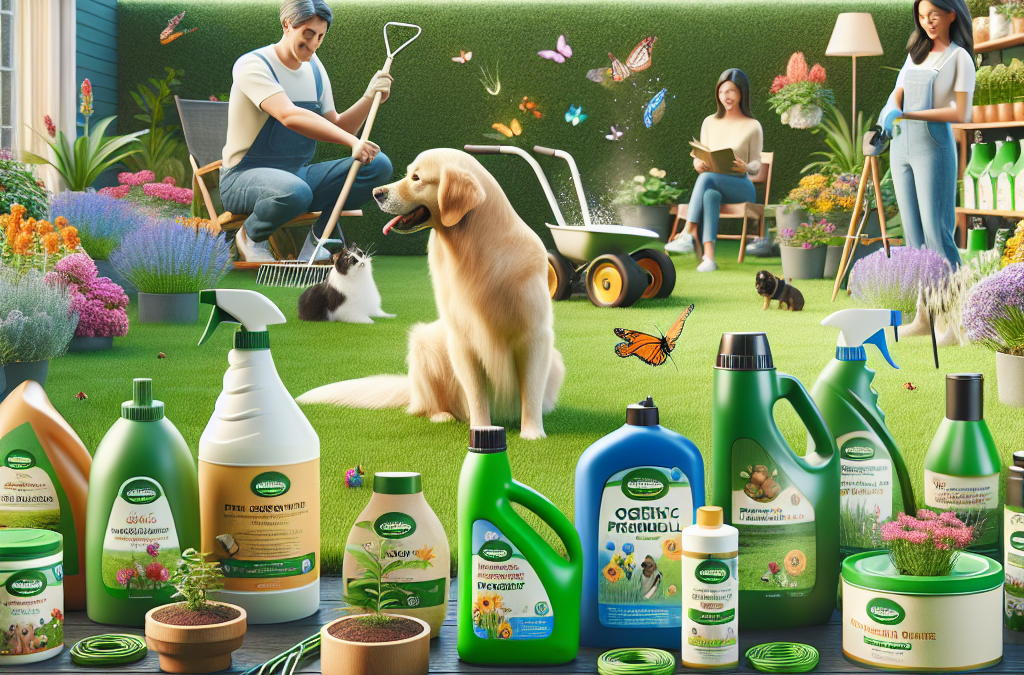Key Takeaways
-
Chemical lawn treatments can pose risks to pets; it’s crucial to use pet-safe alternatives.
-
Organic fertilizers and natural weed control methods protect your lawn and your pets.
-
Creating designated play areas and using barriers can prevent pet-related lawn damage.
-
Address lawn damage promptly with pet-safe repair methods like overseeding.
-
Training pets to respect lawn boundaries and choosing the right lawn care service are essential.
Laying the Groundwork for a Pet-Safe Lawn
As a pet owner, you know that your furry friends love nothing more than to romp and play outside. But maintaining a lush, green lawn while ensuring the safety of your pets requires careful consideration. The key is to start with a foundation that supports both the health of your lawn and the wellbeing of your pets. This means selecting grass types that can handle the wear and tear of pet activity, and choosing treatments that won’t harm your four-legged companions.
Why Chemical Treatments Can Be Harmful
Most traditional lawn care products contain chemicals that can be dangerous to pets. Fertilizers, pesticides, and herbicides can all pose health risks if ingested or even if they come into contact with your pet’s skin. Symptoms of exposure can range from mild irritation to severe, life-threatening conditions. Therefore, it’s not just about keeping your lawn looking good; it’s about keeping your pets safe.
Example: A common lawn fertilizer might contain chemicals like 2,4-D, which has been linked to health issues in dogs. Ingestion or contact with these substances can lead to symptoms such as vomiting, diarrhea, and in severe cases, seizures or coma.
Selecting Safe Treatments for Your Lawn’s Health and Your Pet’s Wellbeing
When it comes to treating your lawn, always opt for pet-safe products. These are typically organic or natural solutions that won’t harm your pets even if they eat grass or lick their paws after walking on the lawn. Look for products that are specifically labeled as pet-friendly or those with natural ingredients that you recognize and trust.
Remember, just because a product is organic doesn’t automatically mean it’s safe for pets. Some natural substances can still be harmful, so it’s important to do your research and read labels carefully.
Organic Alternatives to Traditional Lawn Care

Fortunately, there are many organic alternatives to traditional lawn care products that can help you maintain a beautiful lawn without putting your pets at risk. These options are not only safer for your pets but also better for the environment.
Using Natural Fertilizers for a Lush Lawn
Natural fertilizers are a great way to nourish your lawn without the use of harsh chemicals. These can include:
-
Composted manure from cows or chickens
-
Worm castings
-
Seaweed or kelp-based products
-
Bone meal or fish emulsion
These organic materials release nutrients slowly, which is better for your lawn and reduces the risk of nutrient runoff that can pollute waterways.
Non-Toxic Weed Control Methods
Controlling weeds is a common challenge for lawn owners, but it doesn’t have to involve toxic chemicals. Non-toxic methods for weed control include:
-
Hand-pulling weeds to remove them from the root
-
Using a natural pre-emergent like corn gluten meal to prevent weed seeds from germinating
-
Applying a vinegar-based solution as a natural herbicide for spot treatment
These methods may require more effort or application frequency, but they are much safer for your pets and the environment.
Homemade Solutions for Pest Management
Pests can be a nuisance, but you don’t need to resort to toxic chemicals to keep them at bay. Try these homemade solutions:
-
Mixing up a soap spray with water and a few drops of dish soap to deter aphids and mites
-
Planting pest-repelling plants like marigolds, lavender, or chrysanthemums around the perimeter of your lawn
-
Using diatomaceous earth as a natural pest control for insects with exoskeletons
These natural remedies can be effective and safe for both your lawn and your pets.
Establishing Pet Play Areas to Minimize Damage
One of the best ways to protect your lawn is to designate specific areas for your pets to play. By creating a space that’s just for them, you can minimize the wear and tear on the rest of your yard. This could be as simple as setting aside a corner of the yard with tougher grass that can withstand heavy use, or installing a sandbox for dogs who love to dig. Not only does this give your pets a place to enjoy, but it also helps to keep the rest of your lawn looking great.
Implementing Barriers and Safe Zones for Plants
Protecting your plants from playful pets is just as important as safeguarding your grass. You can create safe zones for your plants by using physical barriers like decorative fencing or raised beds. These not only prevent pets from trampling or digging up your garden but also add an aesthetic element to your yard.
For example, a simple picket fence around a flower bed can deter a dog from entering the area, while adding charm to your landscape. Remember to ensure that any barriers you choose are safe for your pets and won’t cause them harm if they’re curious.
Addressing Lawn Damage from Pets

Lawn damage is a common issue for pet owners, but with the right approach, it can be addressed effectively. The first step is to assess the damage—look for areas where the grass has been worn down by running paws or spots that have been discolored by urine. Once you’ve identified these areas, you can begin the repair process.
Repairing Urine Spots and High-Traffic Areas
Urine spots are a telltale sign of pet damage and can be quite unsightly. The high nitrogen content in pet urine can burn the grass, leading to yellow or brown patches. To repair these spots, you’ll need to flush the area with water to dilute the nitrogen. Afterward, you can apply a pet-safe lawn repair treatment or simply reseed the area.
For high-traffic areas, consider laying down a path of stepping stones or mulch where your pet typically runs. This can help to reduce the wear on the grass and keep your lawn looking neat.
Overseeding and Reseeding for Lawn Regeneration
Overseeding and reseeding are effective methods for regenerating a lawn that’s been damaged by pets. Overseeding is the process of sowing new grass seeds over existing turf, which can help to fill in bare spots and improve the overall density of your lawn. Reseeding, on the other hand, involves starting from scratch in areas where the grass has been completely worn away.
When choosing grass seed, opt for species that are known for their durability and ability to withstand pet activity. Some good options include tall fescue, Bermuda grass, and perennial ryegrass.
Creating a Long-Term Lawn Maintenance Plan
Maintaining a pet-safe lawn is an ongoing process. To ensure that your lawn stays healthy and attractive, it’s important to develop a long-term maintenance plan. This should include regular mowing, watering, and fertilizing with pet-safe products. Additionally, periodic aeration can help to improve soil health and allow roots to grow more deeply, making your lawn more resilient to pet damage.
Preventing Future Lawn Damage
Prevention is key when it comes to keeping your lawn in top shape. By taking proactive steps, you can minimize the potential for pet-related damage and enjoy a beautiful yard year-round.
Training Tips for Pets to Respect Lawn Boundaries

Training your pets to respect lawn boundaries is an effective way to prevent damage. Start by teaching them where it’s acceptable to play and where it’s not. Use positive reinforcement techniques, such as treats or praise, to reward them for staying in designated areas. Consistency is crucial, so be sure to reinforce these boundaries regularly.
Most importantly, make sure that your pets have plenty of exercise and stimulation. A well-exercised pet is less likely to engage in destructive behaviors like digging or excessive running on the lawn.
Maintaining a Healthy Lawn with Regular Pet Activity

Your lawn can remain healthy even with regular pet activity, as long as you take the right precautions. In addition to the strategies mentioned above, consider these additional tips:
-
Water your lawn deeply but infrequently to encourage strong root growth.
-
Keep your pet’s nails trimmed to prevent them from tearing the grass.
-
Immediately clean up any pet waste to prevent it from damaging the lawn or spreading disease.
By following these guidelines, you can create a safe and enjoyable outdoor space for both you and your pets.

Making Your Yard an Oasis for Both You and Your Pets
Creating an outdoor space that caters to the needs of your pets while still being a place of beauty and relaxation for you is entirely possible. It’s all about finding the right balance between the functional needs of a pet-friendly lawn and the aesthetic desires of the homeowner. With thoughtful planning and smart design choices, you can transform your yard into an oasis that delights every member of your family—paws included.
Striking the Balance Between Fun and Functionality
The trick to achieving this balance is to integrate pet-friendly features seamlessly into your landscape design. Consider incorporating elements like durable turf in play areas, paths that cater to your pet’s natural walking patterns, and shaded spots for resting on hot days. By doing so, you’re not only providing for your pet’s needs but also enhancing the visual appeal and functionality of your outdoor space.
Incorporating Pet-Safe Decorative Elements
Decorative elements in your yard don’t have to be sacrificed for the sake of pet safety. You can add charm to your lawn with pet-safe plants and non-toxic mulch, ensuring that your garden is both attractive and harmless to curious critters. Opt for sturdy, non-toxic plants that can withstand a little roughhousing, and always avoid cocoa mulch, which can be toxic to dogs if ingested.
Frequently Asked Questions
How Do I Know If a Lawn Product Is Pet-Safe?
To determine if a lawn product is pet-safe, look for labels that specifically state the product is non-toxic to animals. Research the ingredients to ensure they are safe for your pet’s species. When in doubt, consult with a veterinarian or a pet-friendly lawn care specialist.
Can I Use Synthetic Fertilizers and Still Keep My Pet Safe?
While some synthetic fertilizers may be labeled as safe for pets after a certain period, it’s best to err on the side of caution and choose organic options instead. If you must use synthetic products, follow the manufacturer’s instructions carefully, and keep pets off the treated area for the recommended time.
What Are the First Steps to Repairing a Lawn from Pet Damage?
The first steps to repairing a lawn from pet damage include identifying the damaged areas, diluting any concentrated spots of urine with water, and reseeding or patching these areas with pet-safe grass seed. Address high-traffic paths by possibly creating permanent walkways or reinforcing the turf.
How Often Should I Treat My Lawn With Pet-Safe Products?
The frequency of treating your lawn with pet-safe products will vary depending on the specific needs of your lawn and the products you’re using. As a general rule, fertilize with organic options in the spring and fall, and apply natural weed control methods as needed throughout the growing season.
Are There Any Pet-Safe Lawn Care Services?
Yes, there are lawn care services that specialize in pet-safe treatments. When choosing a service, ask about their products and methods to ensure they prioritize the health and safety of your pets. Look for companies with good reviews from other pet owners and those that offer organic lawn care options.

